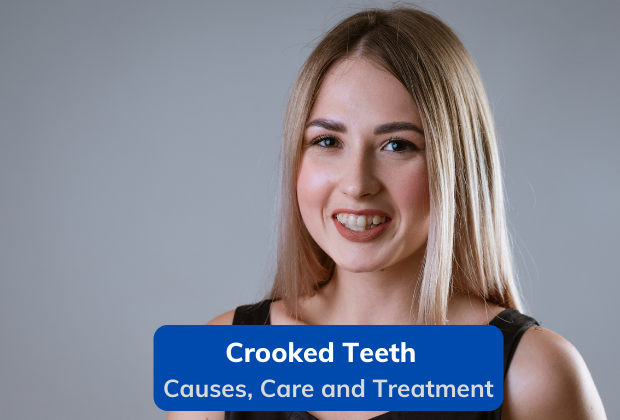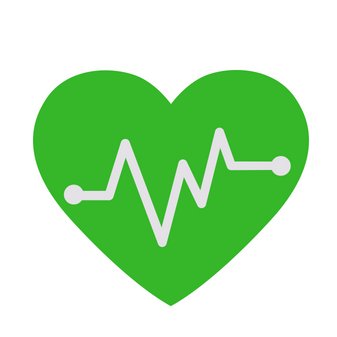Whether you call them buck teeth, snaggle teeth, or crooked teeth, they’re not very attractive. Crooked teeth have many causes, such as genetics and wearing braces, but there are also many ways to straighten them out with dental treatment. Here’s a look at crooked teeth in general and what causes crooked teeth in particular.

How does crooked teeth happen?
While crooked teeth have a variety of causes, trauma is likely one of them. Even if you’ve never knocked out a tooth or had major damage to your gums, it’s still possible that you could have crooked teeth.
Any time that something misaligns or moves in your mouth, your teeth might move too. This can happen when you have a toothache, gum disease or an infection in your mouth, for example. Other times, jaw injuries can cause crooked teeth and may not be as easy to spot.
All kinds of things can cause crooked teeth.
Crooked Teeth Treatment
There are several different types of treatments for crooked teeth, depending on how severe your condition is. These include braces, retainers and cosmetic fixes. If you are struggling with crooked teeth and want to know what treatment will work best for you, consult with a dentist who has experience in correcting dental issues like these. With a little time and effort, your smile can look as good as new.
Dental Braces To Fix Crooked Teeth
Braces are one of several orthodontic options available to straighten teeth. Braces can be made of metal or clear plastic and come in a number of sizes and shapes depending on your teeth. The two main types of braces are fixed braces, where brackets are affixed to each tooth and connected by wires, or removable braces, which use a clear retainer to hold all your teeth in position until you’re ready for them to be removed. Although it’s important that you wear your retainer full-time after treatment, including at night time as prescribed by your dentist, it should not interfere with eating and drinking.
Fixed metal braces require in-person appointments throughout treatment. But clear aligner options don’t always have the same limitations. Home aligner treatments allow you to straighten your smile from home without inconvenient in-person appointments. Some remote companies take convenience even further and offer aligners that only need to be worn overnight.
Aside from convenience, the main difference between at-home clear aligners and in-person options like Invisalign are the conditions they can treat. Invisalign can treat practically any orthodontic issue out there — even severe crowding. Understandably, remote options are more limited. If your crowding is mild to moderate, you may be a candidate for remote options, but if your condition is severe it’s likely you will be better suited for an in-person option like Invisalign.
Orthodontic Treatment Can Fix Issues
Orthodontic treatment is a relatively quick and easy way to fix issues with crooked teeth, but it’s a good idea to know what can cause crooked teeth. The dentist or orthodontist may use his handpiece to grind down any excess tooth structure, as well as to trim, shape, and smooth the teeth.
Sometimes you’ll find an underlying medical condition that’s making your teeth appear crooked. For example, an underbite could actually be an early sign of malocclusion, a condition that causes improper alignment of your jaw and bite.
While malocclusion isn’t common in children (it more often occurs when you age), orthodontic treatment for it is highly effective. In cases like these, having your dentist or orthodontist check for dental issues that are causing tooth alignment problems will make sure you get corrected quickly and easily.
Some Common Reasons For Crooked Teeth
The mechanics of teeth can be complicated, but crooked teeth can often be attributed to poor alignment of upper and lower jaws (and consequently, misaligned teeth). The most common cause is underdeveloped maxillary bones.
If you have crowded teeth, you may have a malocclusion (misalignment of your jaw and its associated parts) that could lead to your tooth crowding.
If your jaw doesn’t align properly, it also might not develop normally during childhood—so while some people are born with small jaws or missing molars due to genetic conditions such as cleidocranial dysplasia or Crouzon syndrome, most people simply aren’t given enough time for their jaws to grow enough.
Top Causes :
- Jaw Dimensions
- Sucking of thumbs
- Use of a pacifier or a bottle
- Pushing of the tongue
- Inhaling through your mouth
- Genetically inherited
- Inappropriate dental treatment
How To Clean And Take Care Of Your Crooked Teeth
Once you’ve been told your teeth are crooked, then it’s time to get to work on treating them. If left untreated, crooked teeth can affect your bite, speech and cause a wide range of problems for you down the road.
The first step is to visit an orthodontist or dental professional who can diagnose your specific condition and suggest a plan of action for straightening your teeth. From there, you will have braces fitted and have them on for several months while they do their job and slowly but surely straighten out your smile.
While wearing braces, keeping up with good oral hygiene practices is important in preventing painful dental issues later on. Here are some steps to take when caring for crooked teeth
Tips To Maintain Healthy Smile
If you want to take care of your teeth, here are some tips that can help you a lot. Take care of your teeth regularly. Floss at least once in a day, brush twice a day and make sure that you see your dentist for regular checkups so as to not have any issues with having crooked teeth or any other dental issues.
If there is one issue with your teeth right now, try to fix it at an early stage before it becomes something bigger. For example, if you have crooked teeth right now and they bother you a lot, get them fixed by going to see a dentist today rather than suffering from them for another few years.
Complications of crooked teeth
Sometimes, crooked teeth can cause toothaches because they may rub together or be forced to protrude in ways they’re not supposed to. This could lead to pain or infections.
When teeth aren’t properly aligned, it can also mean that you have a hard time chewing properly. Many people who have crooked teeth will end up with gaps between their teeth as well as problems with biting and chewing food.
Crooked teeth effects
- Problems with communication : Teeth that are crooked might affect how you pronounce sounds, causing speech problems.
- Gum disease/Tooth aches: If ignored, gum disease can lead to periodontitis [1], a rather more severe disease that affects bones and teeth.
- Shake your self confidence. Frustration with one’s physical appearance can lead to low self-esteem and social isolation.
- Jaw induced pain : Cracked teeth, jaw pressure,TMJ disorder, and severe headaches can all be symptoms of crooked teeth.
- Problems with digestion. Crooked teeth can also make it difficult to bite appropriately, which can lead to digestive issues.
Fortunately, treating crooked teeth is a lot easier than it was in years past thanks to orthodontic treatment options such as braces and Invisalign clear aligners.
Treatment options vary depending on your needs; take some time researching your situation before taking any action so you know what steps are right for you.

Lifebing is driven by an unrelenting passion for promoting health and well-being, our team is wholly committed to curating exceptional content and immersive experiences.
